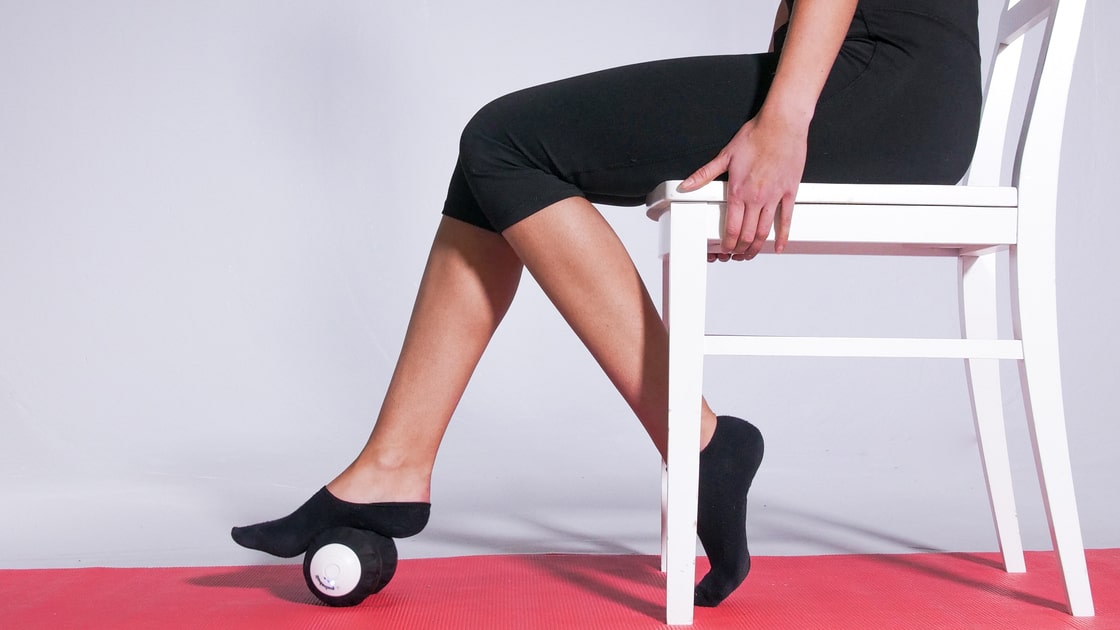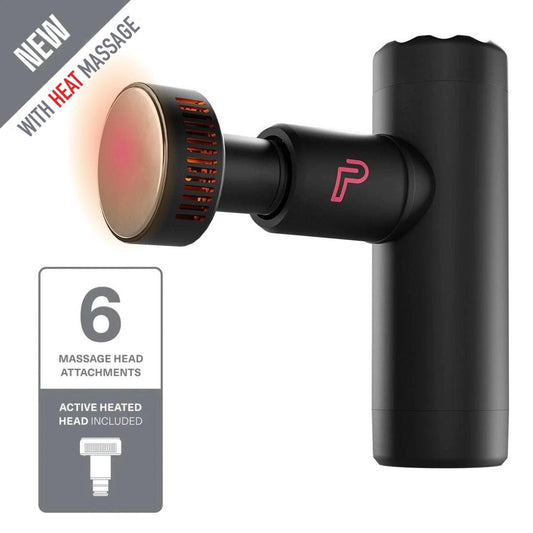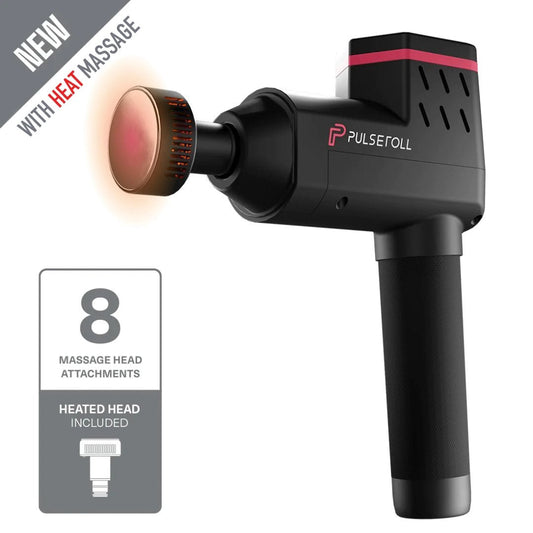Do you already own a foam roller? Maybe you have one, but you’re unsure how to use it as part of your exercise plan to improve your health and fitness?
If you’re an athlete, sports enthusiast, or simply own a foam roller, let us help you to appreciate its many benefits and how to use a foam roller as part of your fitness training!
Jump to:
- When should you use a foam roller?
- What size foam roller is best for a full body?
- Full body self-massage exercise
- How to use a foam roller for each body area
When should you use a foam roller?

Foam rolling before exercise:
Using your foam roller before exercise is a great way to increase your joints' range of motion (1). In simple terms, this means that it reduces tension in your muscles and increases flexibility in the targeted area. This significantly reduces the risk of injury during exercise or competitions, so you can stay in shape and keep making progress.
Foam rolling after exercise:
Using a foam roller after heavy exercise sessions can help to speed up recovery by reducing the effects of exercise-induced muscle damage (2) (3).
Foam rolling outside of training:
Foam rolling isn't just for immediately before or after exercising. Maybe you’re too busy to work out, or it’s your rest day! Regardless, the foam roller is a great tool that can relieve all types of muscle tension. This has been shown to help with mental wellbeing and has even been specifically proven to reduce stress (4).
There are so many different types of rollers and areas of the body where you can use them, that it can be quite confusing to know how to maximize the benefits and take full advantage of these tools, so let’s next take a dive into how to make the most of your sessions.
What size foam roller is best for a full body?
When choosing the most suitable foam roller, you should consider which areas of the body you’re most likely to be targeting. Some areas can be more sensitive than others (5) (6).
Bigger rollers that spread the pressure over a greater surface area make better full-body rollers. Conversely, some larger muscles are hard to penetrate for full effect, so a smaller roller, that can get into those tight spots, might be better.
Recent research suggests that the surface type, rough or smooth, doesn’t matter (7), but the shape is something you should consider. Long rollers are ideal for the upper and lower legs or arms as they can be rolled up and down the muscle with great effect. Smaller rollers, or peanut- or ball-shaped ones are better for working on irregularly shaped muscles, like those in the upper back, or deeper, smaller muscles that are difficult to get to, for example those around the hip joint or deep into those pesky glutes!

Full body self-massage exercise
If you‘re new to foam rolling, then you’ll possibly find the experience painful at the beginning. Do not give up! Consistency is key, but to start, you should minimise the pressure you apply to the roller whilst your muscles adjust to the new experience.
To do this, don't use your full body weight on the foam roller during the early phases, for a less intense workout. For example, using the foam roller on both legs rather than just one, or holding your upper body with your arms to take some weight off the roller. More advanced users can utilise more of their weight to get right into the tight areas.
Make sure you don’t rush the workout. The best research suggests spending as much as 2 minutes on a muscle works best (8), so roll slowly until you find the sensitive tense area and then hold it steady.
How to use a foam roller for each body area
Upper back

The muscles of the upper back tend to be big and strong, and to accumulate lots of tension. Consider using a smaller roller between the shoulder blades to help penetrate deep into the muscles. Given the size of these muscles, even beginners should be able to allow their full upper body weight to lean into the roller.
- Lie on your back with the foam roller underneath your shoulders
- Fold your arms across your body to pull in the shoulder blades
- Engage your core and lift your hips off the floor
- Slowly roll until you feel a tight spot or sensitive area
- Hold for up to 2 mins and allow the tension to slowly fade
Lower back
Care should be taken not to overextend the spine when using a foam roller on the lower back. Using long rollers whilst initially supporting part of your body weight can release tension here. Tension in other muscles (glutes and quadriceps) often causes tension that produces lower back pain (9), so work those areas as well!
Quads and hips

If you’re a runner or cyclist, or if you sit working at your laptop all day, the chances are you have short, tight quadriceps and hip flexors. This causes a lot of discomfort in the lower back and can increase your risk of injury whilst exercising.
Long foam rollers are great for easing tension here as they allow you use both legs simultaneously if you find the exercise too painful. More advanced users undertake single leg exercises to increase the intensity of the workout.
If you suffer from lower back pain, rather than using a foam roller on your lower back, try working on your quads for a few weeks instead, and you’ll soon feel the benefits (9).
- Adopt a plank position with the roller underneath one or both legs
- Engage your core and support your body with your elbows
- Slowly roll along the thigh until you feel a tight spot or sensitive area
- Hold for up to 2 minutes and let the tension slowly fade away
- For tight hip flexors, use a smaller peanut-roller or ball to penetrate deep into the hip joint. You can do this by leaning the affected side into the roller.
- Use the opposing leg and arm for support to reduce the intensity.
Shoulders
Poor posture is now a very common problem, with the main causes being long periods of sitting during work, as well as spending our evenings on our smartphones and laptops. This unnatural position can lead to problems such as painful shoulders and tension headaches.
In fact, a recent study linked depression to this type of upper-body muscle tension (10). Using a foam roller to release this tension can help to make you more productive during important work and to reduce your stress levels.
Long, flat rollers are best for this exercise.
- Lie on your side with the foam roller on the outside of your shoulder.
- Engage your core and lift your hips off the floor. This will put pressure on your shoulder muscles.
- If you find this too difficult, support your body with your opposing arm.
- Slowly roll until you feel a tight spot or sensitive area
- Hold for up to 2 minutes and let the tension slowly fade away.
Neck
‘Tech neck’, or straining of the muscles in the neck, has become even more prevalent during the global Covid pandemic, with large parts of the population working from home and spending huge parts of the day hunched over laptops and surfing on smartphones.
- Rest your neck on a long foam roller or short peanut-style one
- Relax your upper body and sink into the roller
- Rotate your head left and right for 2 minutes
- Engage your core and slowly lift your hips off the floor to increase pressure on your neck muscles
- Support your body weight with your arms and slowly roll your neck on the roller.
- Hold the pressure on tight spots.
Summary
Using a foam roller as part of your daily exercise routine can improve your athletic performance (2), reduce muscle pain (5) and even help with your mental wellbeing (10).
Using a foam roller before or after exercise will have different benefits. Using it outside of exercise is also beneficial. Foam rollers come in many shapes and sizes, so consider which muscles you’re targeting when choosing the best type of roller for you.
Consistency is key! Use your roller daily for maximum benefit and don’t rush the session. Muscles respond better when you perform the exercises for up to 2 minutes.
Related article: What is a foam roller used for and why should you use it?
References
- Yoshimura, A., Schleip, R., & Hirose, N. (2020). Effects of Self-Massage Using a Foam Roller on Ankle Range of Motion and Gastrocnemius Fascicle Length and Muscle Hardness: A Pilot Study. Journal Of Sport Rehabilitation, 29(8), 1171-1178. doi: 10.1123/jsr.2019-0281
- Percival, S., Sims, D., Stebbings, G (2021). Local vibration therapy increases oxygen re-saturation rate and maintains muscle strength following exercise-induced muscle damage. Journal of athletic training. doi.org/10.4085/1062-6050-0064.21
- Laffaye, G., Da Silva, D., & Delafontaine, A. (2019). Self-Myofascial Release Effect with Foam Rolling on Recovery After High-Intensity Interval Training. Frontiers In Physiology, 10. doi: 10.3389/fphys.2019.01287
- Pluess, M., Conrad, A., & Wilhelm, F. (2009). Muscle tension in generalized anxiety disorder: A critical review of the literature. Journal Of Anxiety Disorders, 23(1), 1-11. doi: 10.1016/j.janxdis.2008.03.016
- Cheatham, S., & Stull, K. (2018). COMPARISON OF THREE DIFFERENT DENSITY TYPE FOAM ROLLERS ON KNEE RANGE OF MOTION AND PRESSURE PAIN THRESHOLD: A RANDOMIZED CONTROLLED TRIAL. International Journal Of Sports Physical Therapy, 13(3), 474-482. doi: 10.26603/ijspt20180474
- Vaughan, B., McLaughlin, P., & Lepley, A. (2014). Immediate changes in pressure pain threshold in the iliotibial band using a myofascial (foam) roller. International Journal Of Therapy And Rehabilitation, 21(12), 569-574. doi: 10.12968/ijtr.2014.21.12.569
- Adamczyk, J., Gryko, K., & Boguszewski, D. (2020). Does the type of foam roller influence the recovery rate, thermal response and DOMS prevention? PLOS ONE, 15(6), e0235195. doi: 10.1371/journal.pone.0235195
- Schroeder, J., Wilke, J., & Hollander, K. (2021). Effects of Foam Rolling Duration on Tissue Stiffness and Perfusion: A Randomized Cross-Over Trial. Journal Of Sports Science And Medicine, 626-634. doi: 10.52082/jssm.2021.626
- Bhura, P., & Bhagat, C. (2014). A Study on Iliotibial Band Tightness in Postural Low Back Pain. Indian Journal Of Physiotherapy And Occupational Therapy - An International Journal, 8(2), 74. doi: 10.5958/j.0973-5674.8.2.063
- Lundberg, U., Dohns, I., Melin, B., Sandsjö, L., Palmerud, G., & Kadefors, R. et al. (1999). Psychophysiological stress responses, muscle tension, and neck and shoulder pain among supermarket cashiers. Journal Of Occupational Health Psychology, 4(3), 245-255. doi: 10.1037/1076-8998.4.3.245


